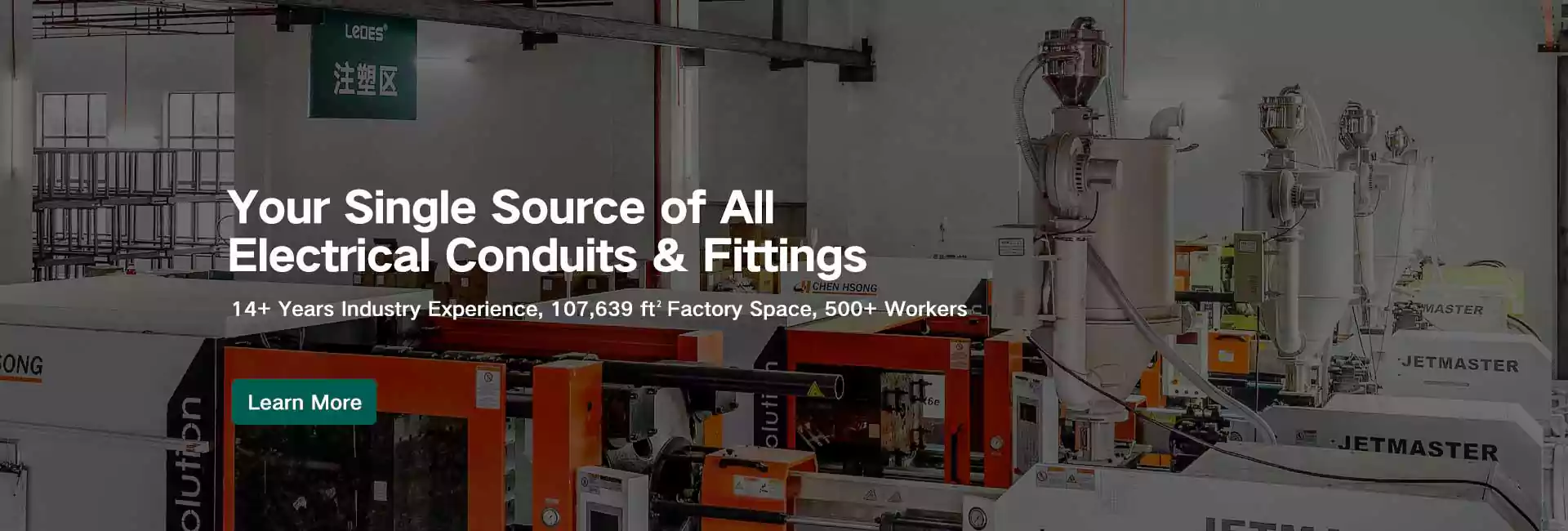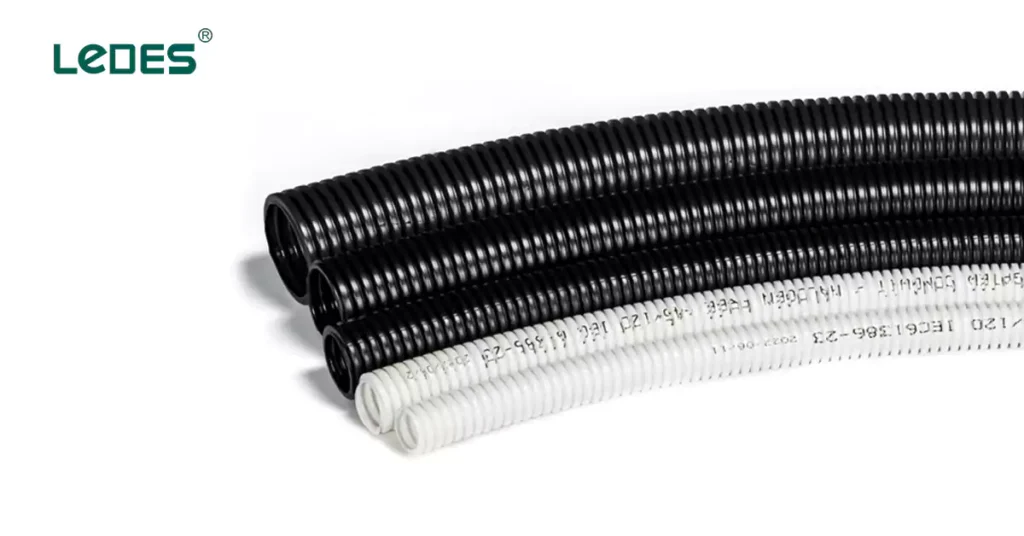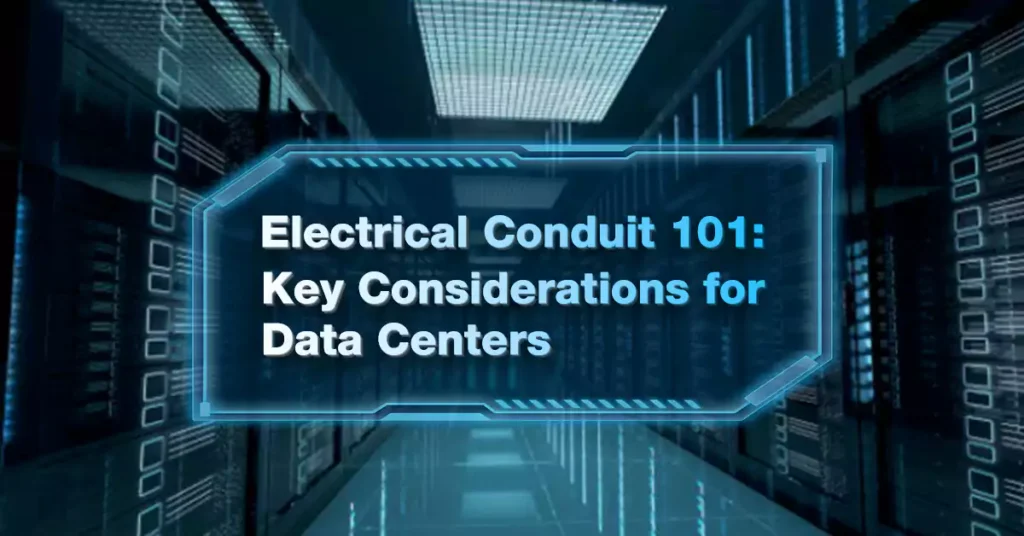
目录
在当今的数字优先世界中,数据中心已成为存储、管理和处理大量信息的关键枢纽。这些设施支持从云存储和在线通信到实时金融交易和人工智能处理等基本服务。由于数据中心全天候运行,维护可靠且安全的电气基础设施至关重要。电气管道系统是该基础设施中经常被忽视但至关重要的组成部分。
电气导管 电气导管在数据中心中发挥着至关重要的作用,它可以容纳和保护电线和通信电缆。精心规划的导管系统不仅可以确保物理保护,还可以帮助遵守安全和操作标准。在本指南中,我们将深入探讨数据中心电气导管的基本知识,研究它们如何有助于提高整体可靠性和效率。
电线管本质上是一种用于布线和保护电线的管子或管道。电线管由 PVC、钢、铝或柔性塑料等材料制成,可防止物理损坏、潮湿、化学物质暴露和电气干扰。
在数据中心, 电线管的重要性更为重大。这些高密度设施不仅要管理标准电线,还要管理复杂的通信电缆阵列以实现网络连接。这些电缆的完整性对于数据中心服务的无缝运行至关重要。电线管为这些电缆提供了结构化的路径,有助于保持秩序、防止缠结并减轻外力造成损坏或破坏的风险。
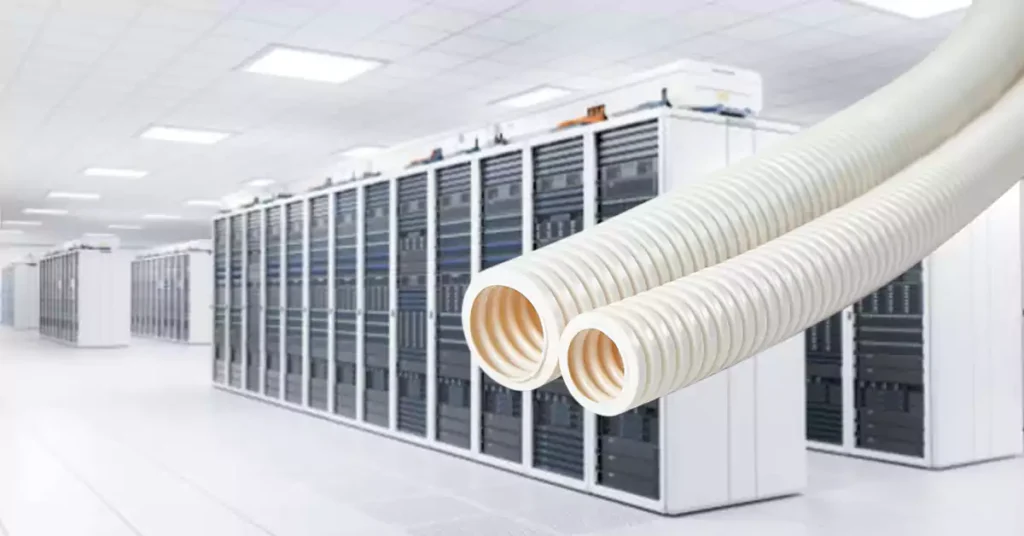
电源保护: 导管可确保为服务器、冷却系统和辅助设备供电的配电线的安全。可靠的导管设置可防止物理损坏、电气故障和潜在的火灾隐患。
通信和数据线路保护: 网络电缆(包括以太网和光纤线路)是数据中心运营的生命线。通过将这些电缆安置在管道中,数据中心可以保护它们免受物理冲击、潮湿和电磁干扰 (EMI) 的影响,所有这些都可能导致数据传输错误或中断。
有序的电缆管理: 典型的数据中心内布满了成千上万条电缆,因此妥善组织至关重要。电线管有助于创建指定的布线路径,减少杂乱,并便于维护和升级。
人工智能 (AI) 已从一个专业领域迅速发展成为金融、医疗、交通和技术等行业创新的关键驱动力。人工智能能够自动执行复杂任务、分析大量数据并产生有价值的见解,因此得到了广泛采用。然而,人工智能的兴起带来了功耗的大幅增加,给数据中心带来了巨大的压力,迫使其跟上步伐。
计算需求激增的驱动力包括以下方面的进步: 机器学习 (ML) 和 深度学习(DL) 模型。这些模型通常包含数十亿个参数,需要强大的处理能力才能进行训练和实时应用。支持这种密集操作所需的基础设施已成为全球数据中心关注的焦点。
- 更大的AI模型和训练周期: AI 模型的规模呈指数级增长。例如,GPT-3 等模型具有 1750 亿个参数,需要大量计算资源。训练这些模型需要数天或数周的大量处理能力,消耗大量电力。
- 数据量和可扩展性: AI 模型训练中使用的大量数据集增加了数据中心的功率需求。数据量需要专门的硬件,例如 GPU 和 TPU 其功耗比传统 CPU 更高。
- 不断创新升级: 人工智能研究的竞争格局推动了数据中心基础设施不断更新的需求。新架构和更复杂算法的引入要求数据中心支持更高的能源需求并快速适应新标准。
人工智能技术的发展给数据中心带来了几个与电源相关的挑战:
- 高能耗和运营成本: AI 工作负载会消耗大量能源。训练一个大型 AI 模型所消耗的电量相当于数千户家庭一年的用电量。这会导致运营成本大幅增加,并对当地电网造成巨大压力。
- 可持续性和碳排放: 以人工智能为中心的数据中心供电对环境的影响越来越令人担忧。目前,数据中心估计占全球碳排放量的 1% 左右,随着人工智能的持续应用,这一比例预计还会上升。这使得能源效率和可持续性成为数据中心运营商的首要任务。
- 现有基础设施压力: 人工智能的快速发展已经超出了现有电力基础设施的能力。这带来了与电压稳定性、频率控制和配电相关的挑战,从而影响数据中心运营的可靠性。
- 冷却和热量管理: 用于 AI 训练的高密度计算会产生大量热量。高效冷却至关重要,因为冷却系统可占数据中心总能耗的 40%。在不增加能耗的情况下满足这些冷却需求是一项复杂的挑战。
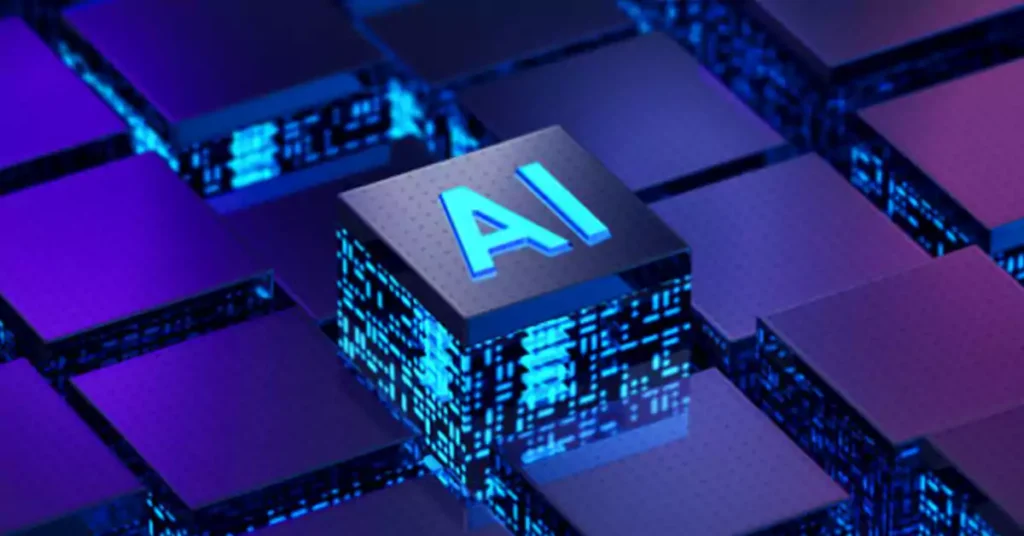
为了应对这些能源挑战,数据中心正在采用创新解决方案:
- 节能电力系统: 利用高效不间断电源(UPS)和能源优化的电源转换器可以显著减少能源浪费并确保稳定的电力输送。
- 可再生能源解决方案: 整合太阳能和风能等可再生能源有助于抵消对环境的影响。数据中心越来越多地投资于现场可再生能源发电,并与绿色能源供应商建立战略合作伙伴关系。
- 智能冷却技术: 实施先进的冷却方法,例如液体冷却和冷热通道遏制,有助于最大限度地减少冷却所需的能量,同时保持高密度计算的安全工作温度。
- 人工智能能源管理: 利用人工智能管理数据中心内的能源分配可以实现实时监控、预测分析和自适应电源管理,从而提高整体能源效率。
- 边缘计算策略: 边缘计算使计算更接近数据源,从而减少中央数据中心的负载并最大限度地减少数据传输能耗。这种方法可以更均匀地分配工作负载并有助于降低总体能耗。
人工智能的兴起不仅彻底改变了行业,也为数据中心的功耗和能源管理带来了巨大挑战。解决这些问题需要结合尖端技术、可持续实践和创新战略,以确保数据中心能够满足人工智能日益增长的需求,同时保持能源效率并最大限度地减少对环境的影响。
随着人工智能 (AI) 不断改变行业,它正在重塑全球数据中心的基础设施。虽然传统数据中心是为处理通用工作负载而构建的,但 AI 数据中心专门设计用于支持 AI 应用(例如机器学习和深度学习)的计算密集型需求。这两类数据中心之间的差异很大,尤其是在电源系统方面。在本节中,我们将探讨 AI 数据中心与传统数据中心的不同之处,重点介绍使电源系统对 AI 工作负载如此重要的核心因素。
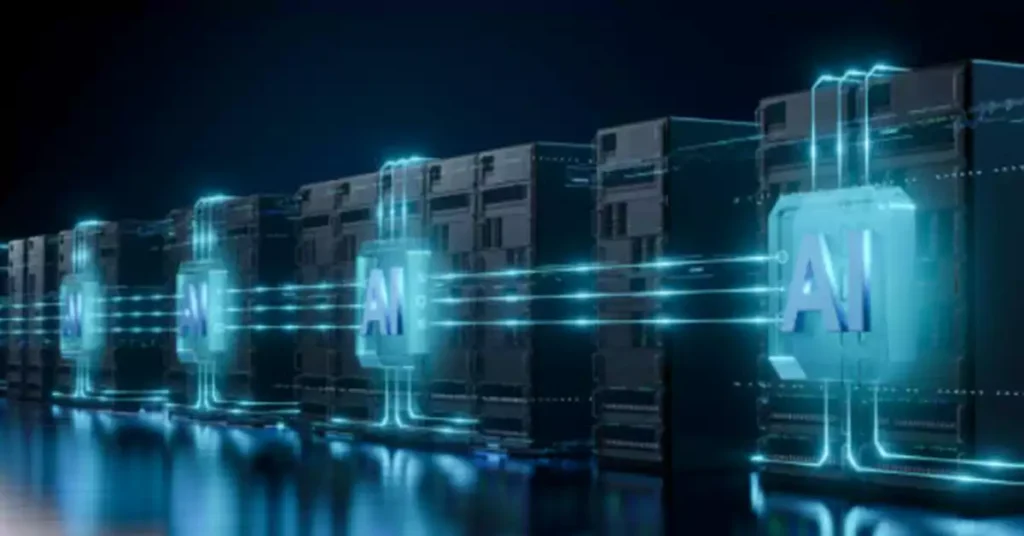
在普通数据中心,基础设施旨在支持各种通用计算应用程序,例如网络托管、电子邮件、文件存储和企业应用程序。计算资源通常是一致的,服务器主要依靠中央处理器 (CPU)。这些服务器针对效率和可靠性进行了优化,支持需要长期稳定计算能力的可预测工作负载。普通数据中心的电力基础设施通常具有冗余性和高可靠性,以维持关键业务应用程序的运行。
另一方面,AI 数据中心旨在处理高度专业化和计算密集型的任务。AI 工作负载(例如训练机器学习模型、执行自然语言处理和进行深度学习操作)需要专用硬件。这通常不仅包括高性能 CPU,还包括擅长并行处理的图形处理单元 (GPU) 和张量处理单元 (TPU)。这些组件提供了 AI 训练所需的巨大计算能力,这可能涉及数十亿个参数并需要大量电力。
AI 数据中心的电源基础设施必须能够支持这些先进的处理单元,确保它们在管理高计算需求的同时以峰值效率运行。此外,AI 工作负载通常表现出不规则的功耗模式,在密集的训练周期中会出现明显的功率峰值。
传统数据中心的耗电量相对稳定且可预测。这些中心管理着各种具有一致能源需求的通用应用程序。虽然能源效率仍然是首要任务,但传统数据中心的总体电力需求低于人工智能驱动的设施,且复杂性较低。
相比之下,由于 AI 工作负载需要大量计算能力,AI 数据中心的能耗明显更高。例如,训练大型 AI 模型的能耗可能比传统数据中心高出 10 倍。AI 数据中心不仅必须针对性能进行优化,还必须针对能源效率进行优化,以减轻其对环境的巨大影响。
鉴于人工智能数据中心对能源的巨大需求,节能技术和先进的电源管理系统至关重要。人工智能数据中心越来越多地采用创新解决方案,例如人工智能驱动的电源管理、实时监控和智能电网集成,以优化能源消耗并减少浪费。
传统数据中心使用传统的冷却方法,如计算机房空调 (CRAC) 装置、架空地板设计和热/冷通道遏制策略,以确保设备保持在安全的工作温度范围内。这些系统旨在处理通用服务器产生的相对较低的热负荷。
然而,由于用于深度学习和机器学习的高性能 GPU 和 TPU 会产生大量热量,因此 AI 数据中心需要更先进的冷却解决方案。AI 数据中心的热量密度明显更高,通常需要更复杂的冷却技术,例如液体冷却或浸入式冷却。这些方法比传统的空气冷却系统效率高得多,并且可以帮助管理 AI 工作负载产生的热量,而不会影响服务器性能。
统计: “人工智能数据中心的冷却系统可占总能耗的 40%。” – Uptime Institute (2023)。
此外,AI 数据中心正在利用先进的热管理技术(例如直接液体冷却)来减少与冷却相关的环境足迹。随着 AI 工作负载的增加,节能冷却将在降低总体功耗方面发挥重要作用。
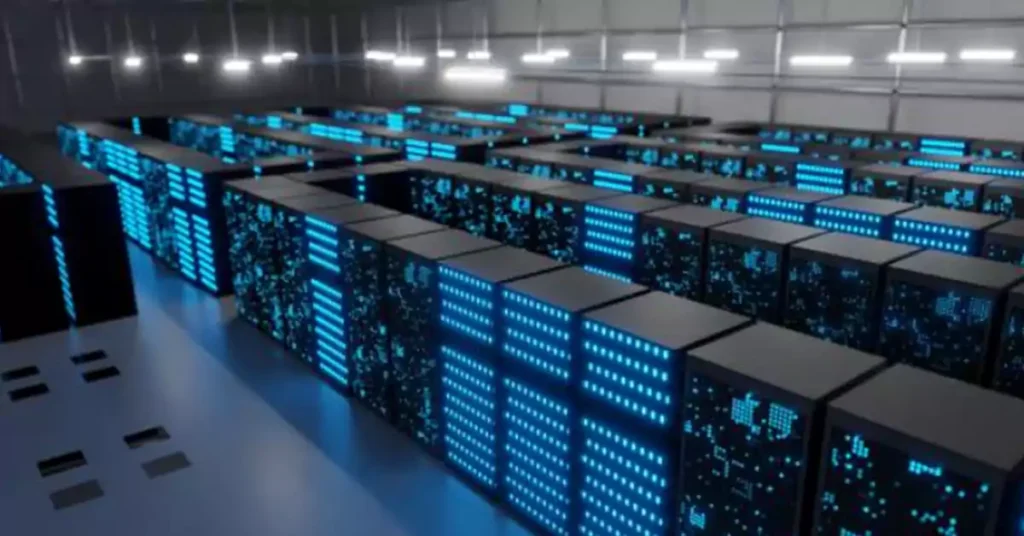
普通数据中心的电力稳定性相对容易维持,因为电力需求是可预测的。备用电源系统(如不间断电源 (UPS) 和备用发电机)旨在处理预期负载并确保在电力中断期间可靠运行。电压和频率波动很少见,通常可以使用标准设备进行管理。
另一方面,人工智能数据中心在管理电源稳定性方面面临更大的挑战。人工智能工作负载的不可预测性意味着这些中心的电力消耗非常不规律。峰值负载通常发生在密集的模型训练期间,给电力系统带来额外的压力。
人工智能数据中心的电力基础设施必须配备先进的电源管理系统,以应对这些突然的电涌。这包括实时监控、预测负载管理以及与先进电网管理系统的集成,以确保数据中心在电力需求波动的情况下也能稳定运行。现场储能解决方案(例如电池或超级电容器)也变得越来越普遍,有助于平滑这些电力峰值并确保在高峰需求期间不间断运行。
虽然传统数据中心注重能源效率,但可再生能源的整合速度却较慢。许多传统数据中心仍然严重依赖化石燃料,尽管人们越来越有兴趣整合太阳能和风能等可再生能源以减少碳足迹。
由于对能源的需求较高,人工智能数据中心在采用可持续能源实践方面面临越来越大的压力。这些数据中心更有可能整合太阳能电池板和风力发电场等可再生能源,以抵消其碳排放。在某些情况下,人工智能数据中心正在与当地能源供应商合作购买可再生能源信用额度或建立现场可再生能源发电能力,以可持续地满足其电力需求。
统计: “数据中心约占全球电力消耗的 1%,随着对人工智能处理的需求不断增加,这一数字预计还会上升。”——绿色和平组织。
此外,AI 数据中心正在探索能源存储解决方案,以便在可再生能源充足时捕获和存储可再生能源,从而减少高峰需求期间对电网的依赖。这些可持续发展工作正成为 AI 数据中心战略的重要组成部分,因为它们致力于最大限度地减少对环境的影响,同时支持快速增长的 AI 工作负载需求。
对于电气系统,所用导管的类型对于确保电线的安全性、功能性和效率起着至关重要的作用。虽然数据中心和传统建筑都依赖电线导管来保护电线,但这些环境的要求和特点却大不相同。本节将探讨数据中心和传统建筑中使用的电线导管之间的主要区别,并考虑每种环境的独特需求。
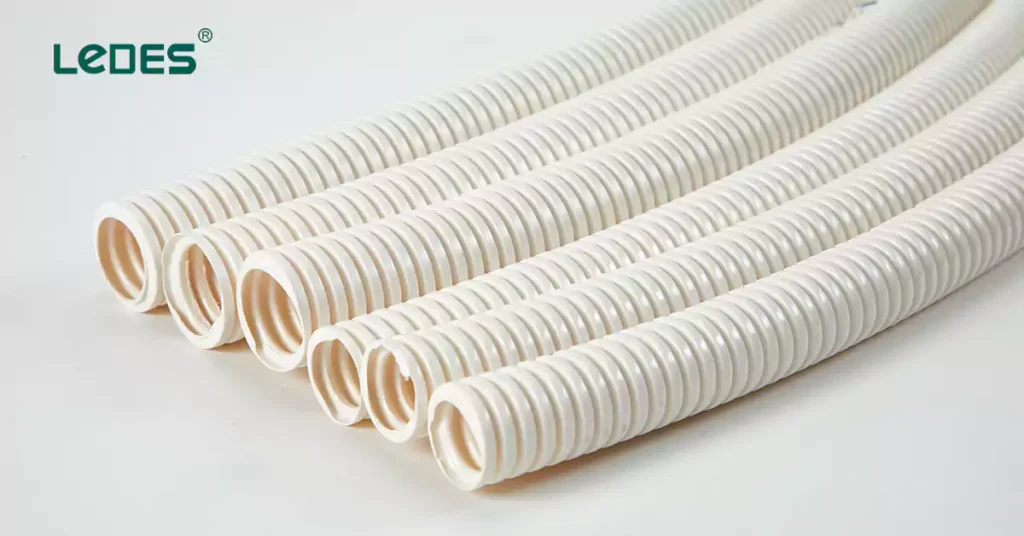
在传统的建筑施工中,电线管主要用作电线的保护外壳。其主要功能是保护电导体免受外部环境条件(如温度波动、湿度和物理损坏)的影响。电线管通常安装在墙壁、天花板或地板上,确保电路的安全,同时便于维护和升级。
传统建筑中常用的导管类型受以下标准的约束: 国家电气规范 (NEC),涵盖了导管安装和一般安全要求。例如,NEC 第 350 条概述了电气金属管 (EMT) 的标准,该管通常用于住宅和轻型商业建筑。
相比之下,由于数据中心内设备的敏感性,数据中心有更专业的要求。数据中心需要管道系统来适应更高的电缆密度、支持更高的电力负荷,并确保电气系统在高需求条件下无缝运行。管道必须能够处理大量用于电力和数据传输的电缆,同时还提供防火和屏蔽电磁干扰 (EMI)。
数据中心的环境也比传统建筑更受控制,其系统旨在管理电源、冷却和安全。数据中心管道经过精心设计,可确保所有线路保持井然有序、安全,并能够支持高性能计算需求。鉴于最大限度地减少停机时间至关重要,数据中心管道系统的设计增强了对火灾、潮湿和干扰等风险的防护。
传统建筑管道系统通常由镀锌钢、电气金属管 (EMT) 或 PVC(聚氯乙烯)等材料制成。每种材料都有其优点,EMT 重量轻且易于安装,而 PVC 则具有灵活性和耐腐蚀性。材料和尺寸的选择取决于当地的建筑规范、项目的具体要求以及要使用的布线类型。
另一方面,数据中心管道系统往往更加坚固,采用刚性金属管道 (RMC) 等材料,具有出色的耐用性和耐火性。鉴于人工智能、机器学习和其他高性能计算工作负载对电气和热能的要求更高,RMC 通常是数据中心的首选,因为它能够承受极端条件。
在暴露于潮湿环境中的区域,例如冷却系统或高湿度区域,可以使用防液导管 (LTC) 来确保电缆保持绝缘并免受腐蚀性元素的影响。此外,数据中心导管系统的设计通常考虑了严格的标准,并获得了 UL(保险商实验室)认证,以确保防火、EMI 屏蔽和耐温性。
所需标准:
数据中心管道系统受一般建筑规范以外的特定标准的约束。例如,电信行业协会 (TIA) 和电子工业联盟 (EIA) 已制定指导方针,指导数据中心常用的结构化布线系统的设计和安装。
数据中心需要能够处理高功率电缆并确保电源线和数据线高效布线的管道系统。高密度电缆需要更精确、更有条理的安装,以保持信号完整性并避免干扰。此外,数据中心管道需要与冷却系统集成,确保电缆得到良好管理并优化气流。
在建筑物中,电力需求较低,需要管理的电缆也较少。管道系统通常更简单,侧重于照明、配电和基本通信的标准布线需求。因此,建筑物中的管道安装不需要处理数据中心中常见的高密度要求或复杂配置。
数据中心因其所容纳的高性能设备而产生大量热量,尤其是在运行耗电的 AI 工作负载或大规模计算任务时。数据中心的管道系统必须设计为与冷却基础设施配合使用,以确保电缆和设备不会过热。
为了管理服务器和其他硬件产生的高热,数据中心管道系统必须与先进的冷却系统集成。管道需要允许高效的气流并支持专门的冷却解决方案,例如液体冷却或浸入式冷却,而这些解决方案通常不用于传统建筑。
虽然建筑物确实有 HVAC 系统,但冷却需求远低于数据中心。建筑物中的管道系统不需要管理相同水平的热量,并且重点通常是在不集成复杂冷却解决方案的情况下保持安全、可靠的布线。
在传统建筑中,电气管道安装通常遵循标准布线惯例和当地建筑规范。安装涉及穿过墙壁、地板或天花板的电线,特别注意确保符合消防安全规范。虽然管道安装通常很简单,但也必须考虑未来的接入需求和维护的便利性。
在数据中心,管道安装是一个更精确、更有序的过程。高密度的电缆、复杂的布线要求以及对不间断电源和数据流的需求要求采用更复杂的方法。结构化布线方法(例如水平电缆托盘和垂直电缆走线)用于有效管理电缆并保持最佳气流,这对于冷却和系统可靠性至关重要。
数据中心的布线系统设计得井井有条,最大限度地降低了电缆物理损坏的风险,并确保维护或升级的便捷性。数据中心的管道通常需要以方便快速扩展或修改的方式安装,因为数据中心环境会不断增长和技术升级。
随着传统建筑变得越来越“智能”,照明、暖通空调和安全系统集成度越来越高,对先进电气管道系统的需求也在不断增长。智能建筑需要能够支持集成传感器、电源控制系统和数据传输线路的管道系统。这些系统将越来越多地采用实时监控和自动控制,以提高能源效率和建筑管理。
对于数据中心而言,管道系统的未来重点是提高灵活性和可扩展性。随着人工智能工作负载和数据处理需求的不断增加,数据中心设计必须不断发展,以适应更高的功率负载和更广泛的布线系统。模块化管道系统能够随着数据中心的增长而扩展,预计将变得更加普遍。此外,智能管道系统与用于实时监控、电缆健康检查和故障检测的传感器的集成将有助于确保数据中心运营的可靠性和效率。
可持续性也将成为建筑物和数据中心管道系统发展的关键驱动因素。随着可再生能源越来越多地融入电网,这两种设施都需要能够支持节能电气系统并最大限度减少环境影响的管道解决方案。
电气管道系统在数据中心的安全高效运行中发挥着至关重要的作用。这些系统保护、组织和管理为数据中心运行供电的复杂电缆网络。
数据中心包含数千条用于提供电力、数据连接和网络链路的电缆。如果没有适当的保护,这些电缆很容易受到物理损坏、电气故障或诸如湿气、灰尘和温度变化等环境因素的影响。
电气导管可保护这些电缆,降低导致服务中断或停机的损坏风险。导管可保护电缆免受物理冲击、磨损和环境危害,确保电力和数据系统保持可靠和正常运行。
数据中心处理大量数据并运行众多计算系统。这需要密集的电缆网络来连接一切。与传统建筑不同,数据中心的电缆量要大得多。
电气导管有助于整理和管理这些电缆,防止电缆缠结,确保所有电缆都正确布线。通过保持电缆整洁,导管系统有助于最大限度地利用空间,使维护或升级系统变得更加容易。有序的系统还可以确保电缆不会干扰气流或冷却。
With the high volume of electrical equipment in data centers, fire safety is critical. Electrical faults, overheating, or equipment failure can lead to fires, which can quickly spread and damage valuable equipment.
Conduits are often made from fire-resistant materials, such as rigid metal conduit (RMC), to prevent the spread of fire. These materials help contain fires, protect sensitive equipment, and comply with safety regulations. Fire-resistant conduit reduces the risk of catastrophic damage and ensures that the data center meets strict fire safety standards.
Data centers rely on many electrical signals that can interfere with one another. Electromagnetic interference (EMI) can cause data transmission issues, disrupt operations, and damage sensitive equipment.
Electrical conduit, especially those made of metal, provides shielding against EMI. This helps maintain stable power and data transmission, ensuring that the equipment functions properly. With well-protected cables, data centers can prevent disruptions and keep operations running smoothly.
Data centers are dynamic environments that need to adapt to rapidly changing technology and increasing demands. As new equipment is added, the electrical infrastructure must expand to support the increased load.
Electrical conduit systems are designed to be flexible and scalable. They allow data centers to easily add new cables as they grow. This adaptability ensures that data centers can meet the evolving needs of technology without major infrastructure changes. Conduit also helps organize cables for future upgrades, making the process more efficient and cost-effective.
Efficient operations are essential in data centers. Poor cable management can block airflow, increase cooling costs, and lead to equipment overheating.
By organizing cables with conduit systems, data centers can improve airflow and cooling efficiency. Properly installed conduits ensure that cables don’t obstruct cooling systems, which helps maintain the ideal temperature for equipment. This reduces energy consumption and improves overall efficiency.
Cooling is critical to maintaining optimal conditions in a data center. Overheating can cause hardware failure and disrupt service. The complexity of cooling systems in data centers requires well-organized cable management to ensure that air circulation is unhindered and cooling systems perform efficiently.
Electrical conduit systems play an important role in supporting temperature regulation by keeping cables organized and out of the way of air and cooling ducts. By ensuring proper airflow, conduit systems help cooling units, such as CRAC (Computer Room Air Conditioning) systems or liquid cooling, to function more efficiently. In high-density environments, reducing cable clutter allows the cooling systems to work effectively, helping to prevent overheating and keeping energy consumption in check.
Data centers are constantly evolving, with new technologies and upgrades being implemented regularly. The ability to easily access and maintain cables is crucial for minimizing downtime.
Conduit systems make cable management easy, helping technicians quickly locate and maintain cables. With clear organization, they can perform routine checks, replace outdated cables, and upgrade systems without disrupting operations. This helps data centers stay efficient and up-to-date as technology continues to evolve.
The choice of conduit in data centers is influenced by factors like durability, fire resistance, ease of installation, and cost. Each type of conduit has its strengths and potential risks, making it essential for data center planners to understand their specific needs and constraints. Here, we explore the main types of conduit used in data centers, analyze their benefits and drawbacks, and offer insight into why they might be chosen for certain applications.
优点:
Affordable: Cost-effective for large installations.
轻的: Easy to cut and install, saving time and labor.
耐腐蚀: Doesn’t rust, making it reliable in various conditions.
缺点:
Heat Sensitivity: Can melt or burn in high temperatures, posing a fire risk.
Low Strength: More prone to physical damage than metal options.
No EMI Protection: Doesn’t shield against electromagnetic interference, which can be an issue in high-density power areas.
目的: Low-voltage areas or non-critical applications where cost savings are a priority.
优点:
防火: Can withstand high temperatures without melting.
Durable: Offers excellent mechanical protection.
EMI Shielding: Helps protect cables from electromagnetic interference.
缺点:
Heavy: Difficult to handle and install, increasing labor time and effort.
Potential to Rust: Even galvanized steel can corrode over time without proper maintenance.
Higher Cost: More expensive than non-metallic options.
目的: High-power areas, main power feeds, or places needing strong fire protection.
优点:
Lightweight and Strong: Easier to handle than steel but more robust than PVC.
非导电: Reduces the risk of electric shock.
Heat-Resistant: Performs well in higher temperatures.
缺点:
Can Become Brittle: May weaken over time, especially under mechanical stress.
More Expensive than PVC: But usually less costly than steel.
Special Installation: May need specific tools for cutting.
目的: Areas needing a balance between durability and lightweight properties, such as cable trays near high-power servers.
优点:
Highly Flexible: Easy to install in tight or irregular spaces.
防潮: Liquid-tight versions provide extra protection against water.
Adaptable: Ideal for connecting equipment that might move or be maintained regularly.
缺点:
Less Durable: Not as strong as rigid metal conduits.
Lower Fire Resistance: May not be suitable for areas with high fire risk.
Potential Wear: Can degrade faster in high-traffic areas.
目的: Areas requiring flexible connections or moisture resistance, like zones near cooling systems or movable equipment.
4 Types of Electircal Conduit in Data Centers
方面 |
PVC 导管 |
Steel Conduit |
Fiberglass Conduit | Flexible & Liquid-Tight Conduit |
防火性能 | No | 是的 | 是的 | Limited |
耐用性 | 缓和 | 高的 | 高的 | 缓和 |
重量 | 光 | 重的 | 光 | 光 |
耐腐蚀 | 高的 | Moderate(with coating) | 高的 | 高的 |
成本 | 低的 | 高的 | 缓和 | 缓和 |
EMI Shielding | No | 是的 | Limited | Limited |
Heat Resistance | 低的 | 高的 | 高的 | Limited |
灵活性 | 低的 | 低的 | 低的 | 高的 |
Moisture Protection | 低的 | 缓和 | 高的 | 高的 |
Proper compliance with industry regulations and standards is crucial when selecting conduit systems for data centers. The following are key codes and certifications that should be met:
NEC(国家电气规范): The NEC provides comprehensive guidelines for electrical conduit installation, addressing aspects such as fire safety, grounding, and installation practices. Data center designs must align with NEC standards to ensure safe and efficient electrical infrastructure.
UL(美国保险商实验室): Conduit materials used in data centers often require UL certification. This certification confirms that the conduit meets stringent requirements for fire resistance, electrical safety, and durability. UL-listed conduits provide assurance that they can withstand specific environmental and operational conditions.
TIA/EIA Standards: The Telecommunications Industry Association (TIA) and the Electronic Industries Alliance (EIA) set standards for structured cabling systems, including conduit usage in telecommunications and data centers. These standards ensure that conduit installations do not interfere with signal transmission and that they support organized and efficient cable routing.
Ledes is a recognized manufacturer of high-quality conduit systems tailored to meet the stringent demands of modern data centers and electrical infrastructure projects. With a reputation built on innovation, durability, and adherence to international standards such as UL, CSA, AS/NZS, IEC, and CE, Ledes provides reliable solutions that cater to a wide range of applications, including data centers requiring robust, adaptable conduit systems for efficient cabling and safety management.
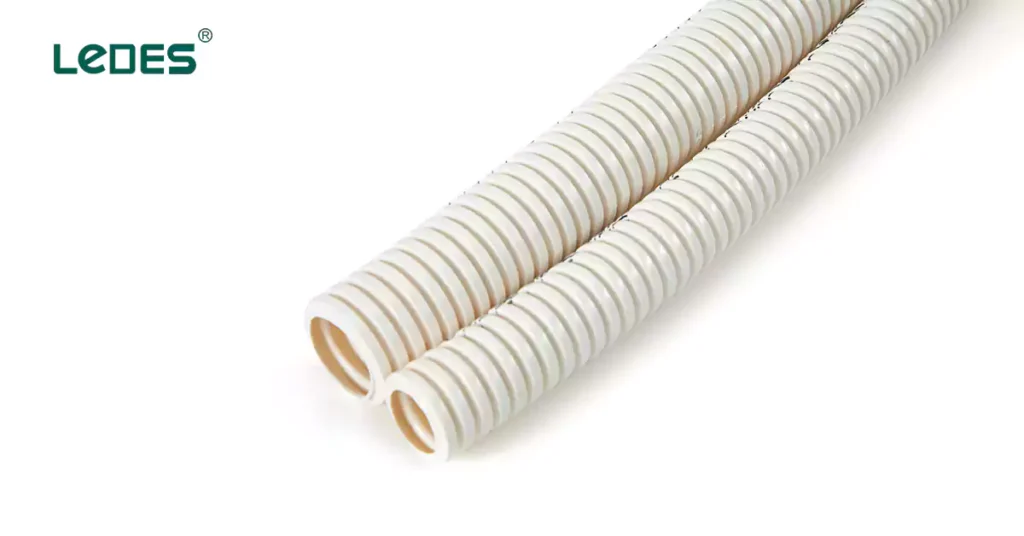
Ledes produces communication conduits that comply with the rigorous Australian standards, ensuring top-notch quality and resilience. These conduits are specifically designed to manage and protect network cables, preventing signal loss and minimizing risks associated with electromagnetic interference (EMI). The Australian standard communication conduits offered by Ledes are known for:
- High Durability: Engineered to withstand harsh conditions while maintaining optimal performance.
- 安装简便: Lightweight and designed for quick, seamless setup.
- 防火性: Ideal for indoor and outdoor applications in data centers, where fire safety and exposure to elements are critical considerations.
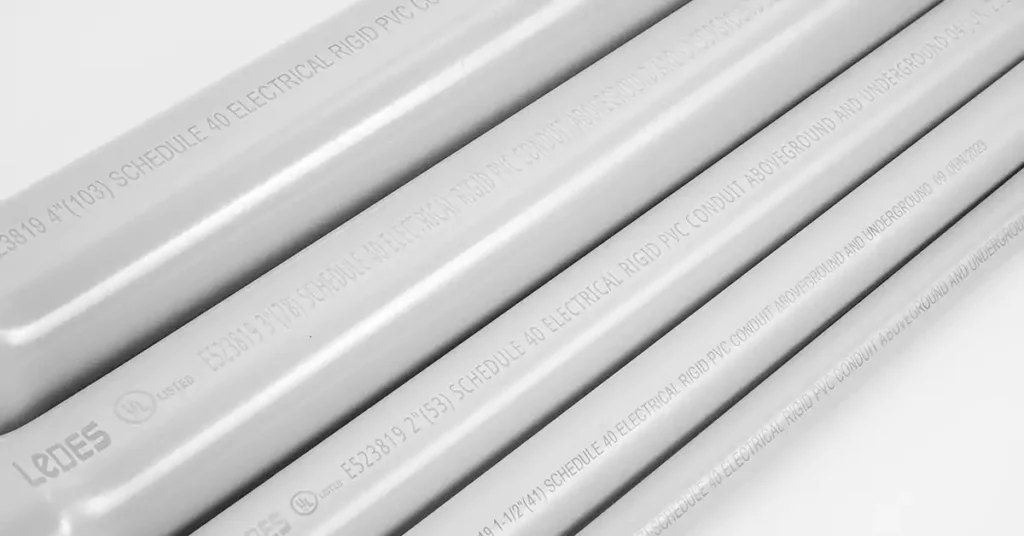
For data centers in regions requiring American standards, Ledes provides Schedule 40 and Schedule 80 PVC conduits:
- Schedule 40 Conduits: These are known for their balance between cost and durability, making them suitable for standard installations where moderate mechanical protection is needed. They are easy to install and offer good flame-retardant properties.
- Schedule 80 Conduits: With thicker walls, these conduits provide enhanced mechanical protection, making them ideal for high-stress environments within data centers that might face potential impacts or heavier loads.
Both types adhere to industry norms and ensure the safe routing of electrical wiring and network cables, providing consistent insulation and minimizing the risk of electrical faults.
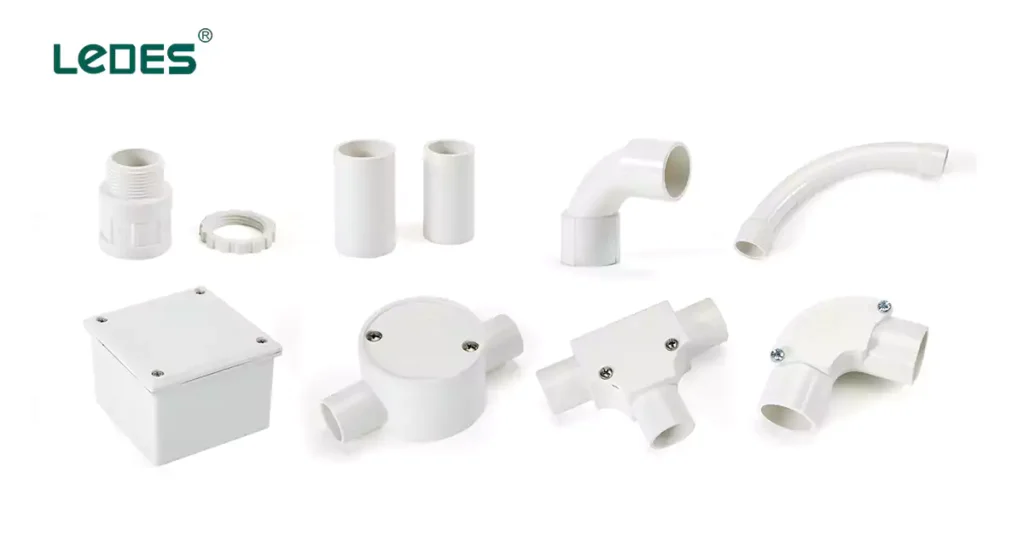
Ledes complements its conduit offerings with a range of essential electrical fittings designed to ensure comprehensive, seamless conduit systems:
- 肘部: Engineered to allow for smooth directional changes in conduit pathways without compromising on cable integrity.
- 联轴器: Secure and reinforce conduit connections, ensuring continuous protection along the entire cable path.
- Boxes: Provide junction points for connections, facilitating maintenance and easy upgrades of the electrical infrastructure.
And there are couplings, adapters, junction boxes many other fittings for using with conduit installation in data center.
These accessories are designed with the same high standards of durability and compliance, ensuring that data centers maintain uninterrupted operations and support complex network configurations.
In conclusion, electrical conduit systems play a vital role in the efficient, safe, and reliable operation of data centers. As data centers evolve to meet the increasing demands of AI, cloud computing, and high-performance applications, the importance of choosing the right conduit material and adhering to compliance standards becomes even more critical. Whether using PVC, steel, fiberglass, or flexible metal conduits, each material offers distinct advantages and potential challenges that must be carefully considered to meet the unique needs of a data center environment. Additionally, strict compliance with regulations such as the NEC, UL, and TIA/EIA standards ensures that these systems perform optimally while maintaining safety and durability. By selecting high-quality conduits, incorporating advanced cooling solutions, and ensuring proper installation, data centers can safeguard their infrastructure, support future growth, and minimize downtime risks. Choose suppliers that provide reliable solutions tailored to these needs, data centers can stay ahead of the curve in an increasingly demanding technological landscape.

